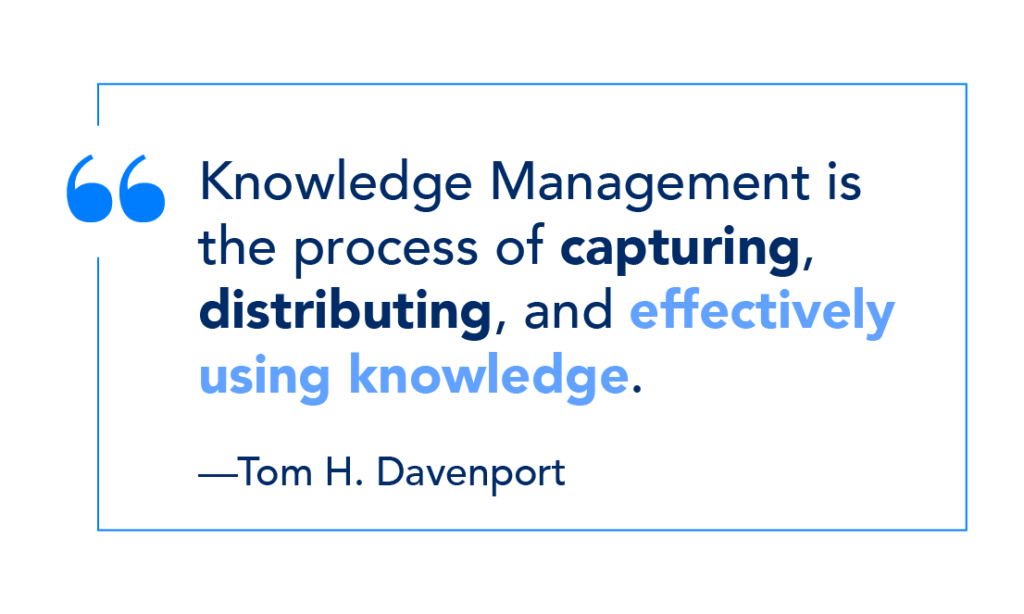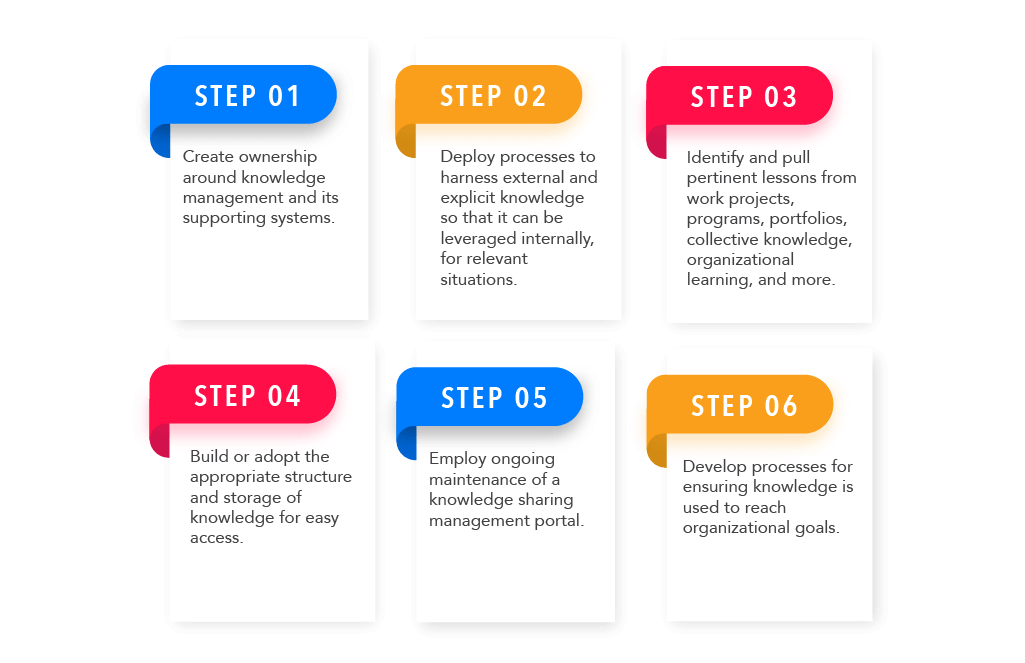Having trouble defining knowledge management (KM)? Research the term, and you’ll find hundreds of definitions and varying explanations. How comprehensive are these definitions? Some are abstract, others are deeply academic, and still others can appear strictly focused on the knowledge side without as much attention given to the management aspect.
Further, which definition is the most commonly used? The general consensus seems to align with Distinguished Professor at Babson College, Tom H. Davenport’s definition, which he provided back in 1994: “Knowledge Management is the process of capturing, distributing, and effectively using knowledge.”

If you’re like most people, you’ve likely paid little attention to how knowledge management affects both your personal and work life on an everyday basis. For instance, think of all the knowledge base apps you consistently use such as Instagram, YouTube, TripAdvisor, Wikipedia, and others, to read reviews and submit your thoughts.
In essence, you were participating in a form of knowledge management. Moreover, thanks to advances in tech, you no longer need to venture across the pond to hold a business meeting with prospective European partners. On the contrary, you can share organizational knowledge via video conference.
It’s a repository, but it’s not static.
When you draw from knowledge management, you are harnessing feedback while contributing to a central source that manages information. From this relevant knowledge, or intellectual capital, you can find intrinsic value. If you look at it from the business world perspective, knowledge can be comprised of the experiences, competencies, skills, and expertise, of employees and customers of a given company.
Is there a standardized process?
Knowledge management can also make use of a variety of processes and technologies to facilitate collaboration while linking individuals to subject matter experts when necessary. As a result, organizations can avoid repeating the mistakes of the past or having to reinvent the wheel. At its best, knowledge management is designed to get the right information to the right individual at the right time.
Additionally, it should be configured to the company’s strategy. What kind of knowledge does your company value? Any successful knowledge management strategy requires an assessment of where and how a particular org’s knowledge exists. The result is a system of processes that not only encompasses organizational functions, but achieves buy-in and usage from its associated members—leadership, employees, affiliates, vendors, etc.
Knowledge management often focuses on knowledge storage, curating, and refinement. However, it may also be used as a system for knowledge creation. For example, picture having the ability to derive all the lessons learned from every company onboarding class, training session, and online module, without having to pore through various folders and emails, or needing to ask multiple coworkers.
Isn’t knowledge nebulous?
To be clear, knowledge management isn’t about managing knowledge just for knowledge management’s sake. Instead, knowledge management was intended to be a means for filtering the company’s knowledge types with the stated objective of reaching business goals. In terms of exploring knowledge management, you might look at it from these perspectives:
- Management practices
- Information technology
- Organizational efforts
- Supply and adoption rates
Moreover, there does exist a conceptual framework for executing knowledge management, primarily via the following practices:
- Review
- Conceptualize
- Reflect
- Act
While there are different types of knowledge, they’re well-defined and have all been thoroughly studied:
- Tacit knowledge: Knowledge gained from personal experience. This is difficult to document or transfer to a knowledge portal.
- Embedded knowledge: These are the skills learned by way of processes, rules, and/or organizational culture.
- Explicit knowledge: This knowledge is easy to store as it is recorded in databases, documents, memos, and other types of media.

For an even clearer picture, you can break down the different business knowledge types into these categories:
- Factual knowledge
- Expectational knowledge
- Conceptual knowledge
- Methodological knowledge
Now that you have a better understanding of knowledge management, perhaps you recognize that your company already engages in one or more of the listed practices, e.g., using a shared drive for storing files. On top of shared documents, knowledge management is about improving staff expertise.
Social media can also play a role in knowledge management by enabling both connections and collaboration. For instance, a company may blend social media elements with knowledge base software. For organizations ready to capture and share knowledge, it’s essential to take the following steps:
- Create ownership around knowledge management and its supporting systems.
- Deploy processes to harness external and explicit knowledge so that it can be leveraged internally, for relevant situations.
- Identify and pull pertinent lessons from work projects, programs, portfolios, collective knowledge, organizational learning, and more.
- Build or adopt the appropriate structure and storage of knowledge for easy access.
- Employ ongoing maintenance of a knowledge sharing management portal.
- Develop processes for ensuring knowledge is used to reach organizational goals.

Knowledge management is so important because it improves the decision-making process, increases efficiency, enables better project management, empowers a quicker rate of innovation, provides the ability to offer valuable insights to your clients and prospects, and more.
Any organization can benefit from knowledge management. As a company starts to mature, it may begin to create stronger ties between strategy, culture, and leadership with an eye towards long-term operations. This is where knowledge management can offer the necessary support to boost employee performance and daily operations.
Of course, a keen understanding of the history behind knowledge management is essential for a successful implementation.


